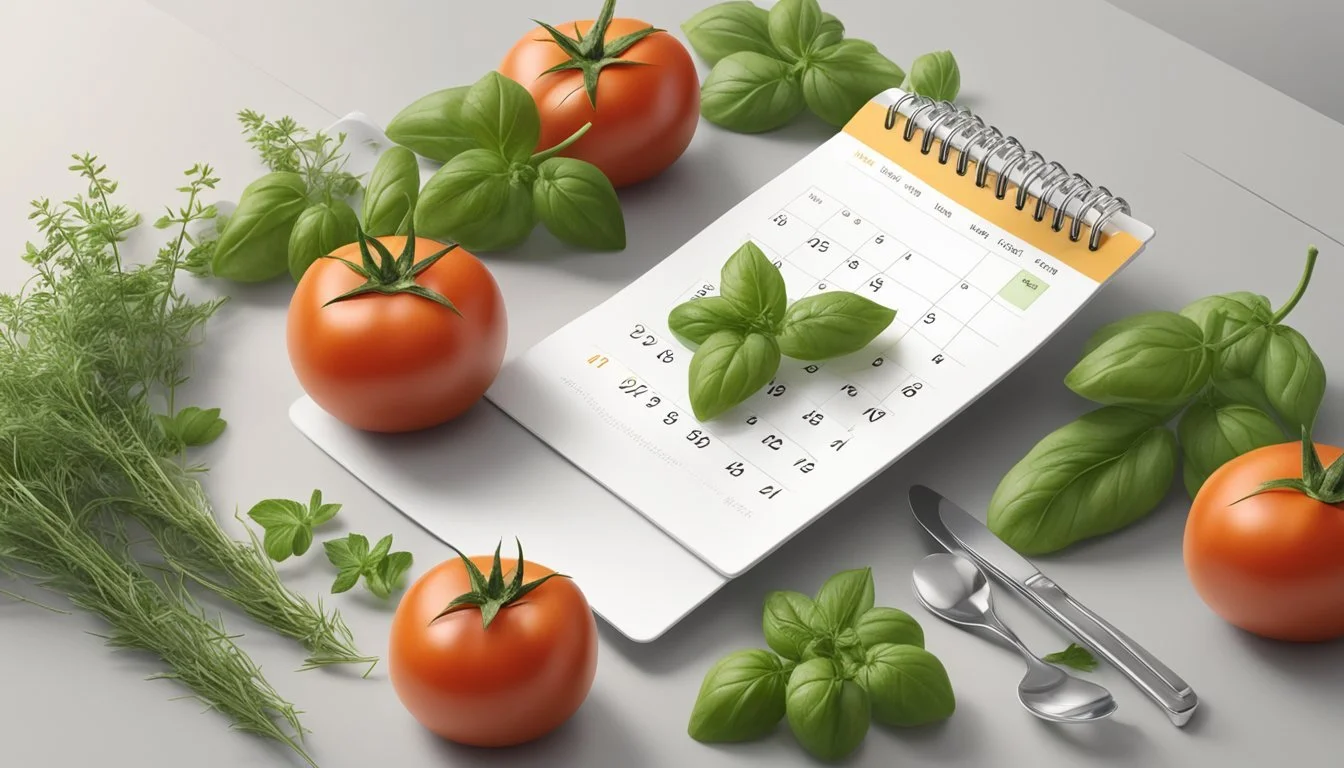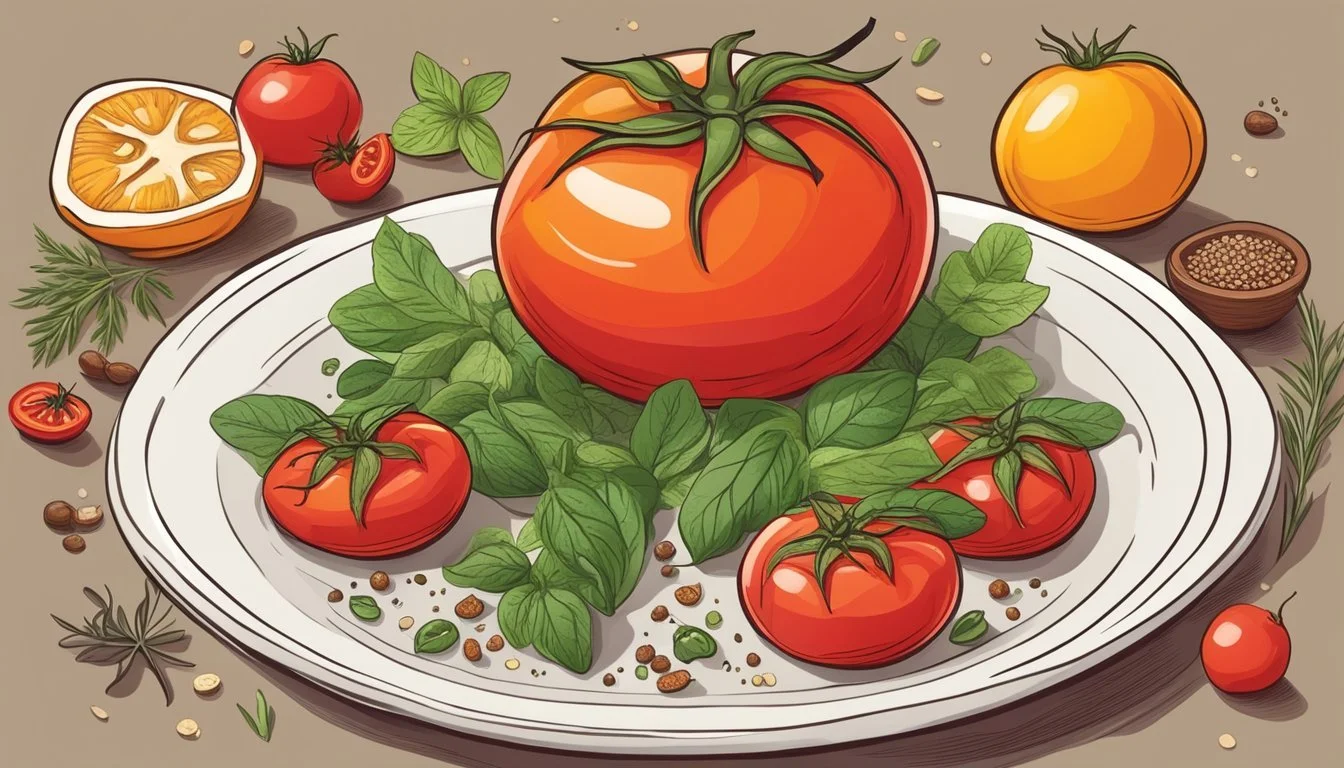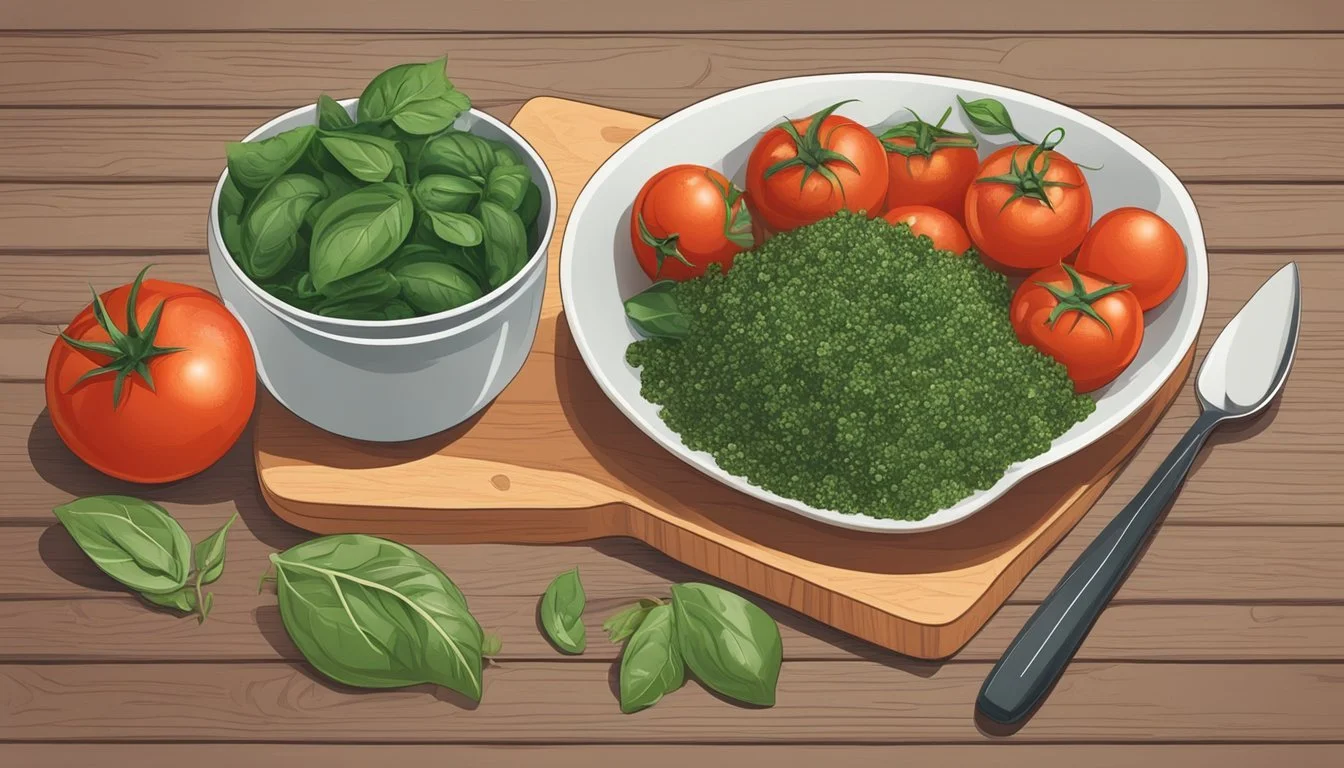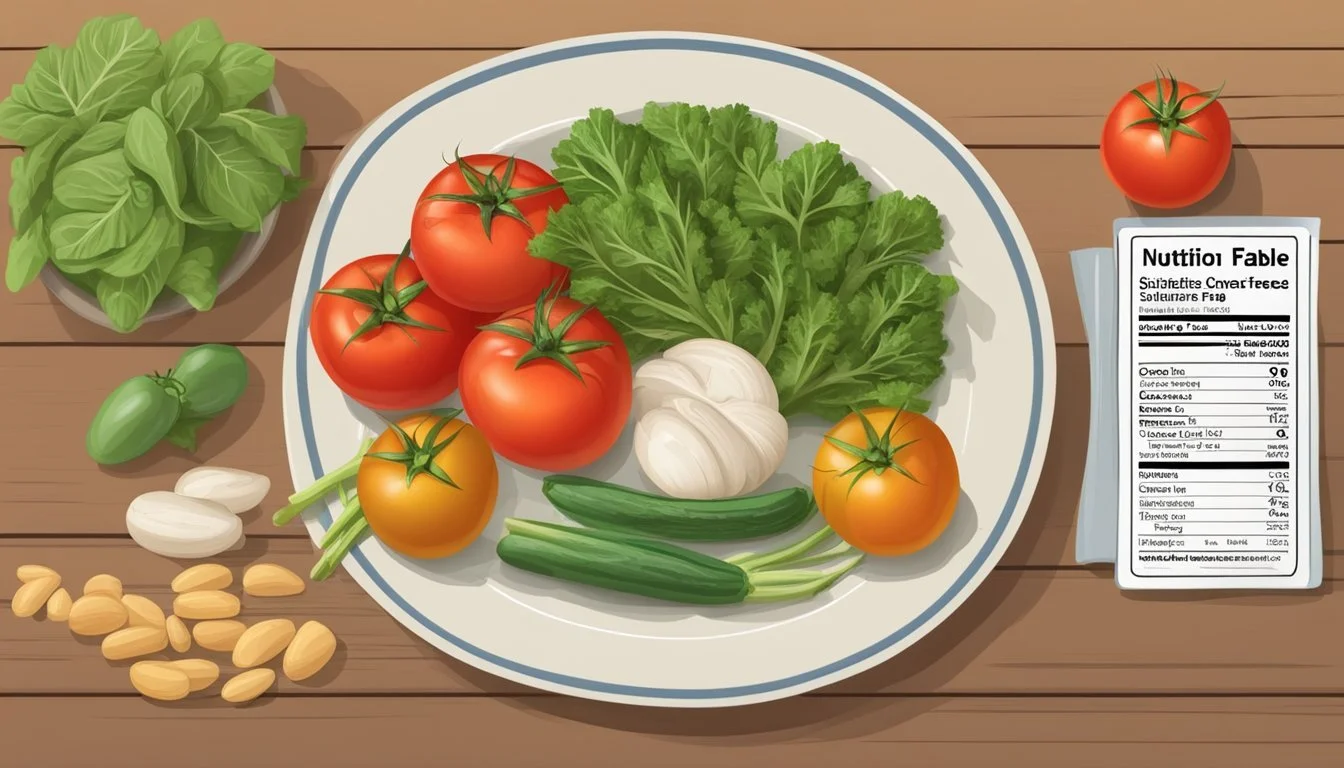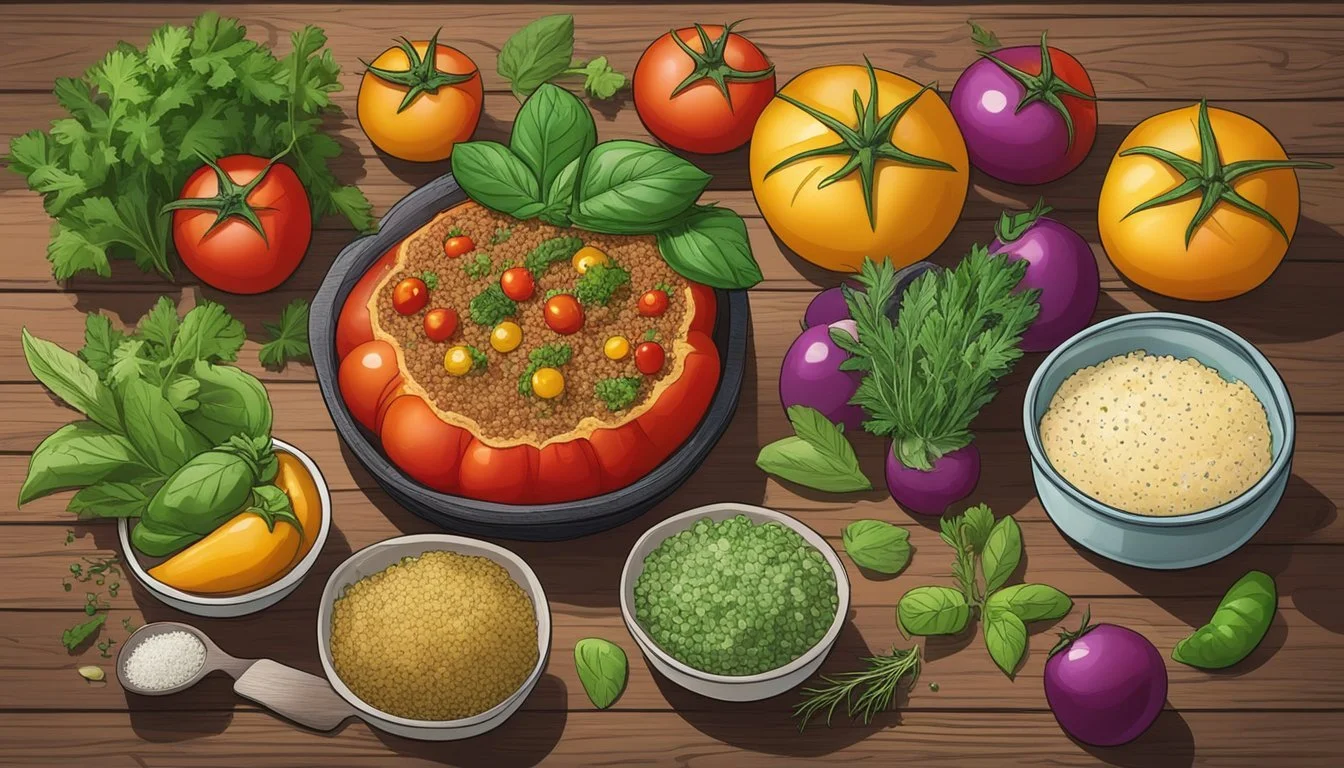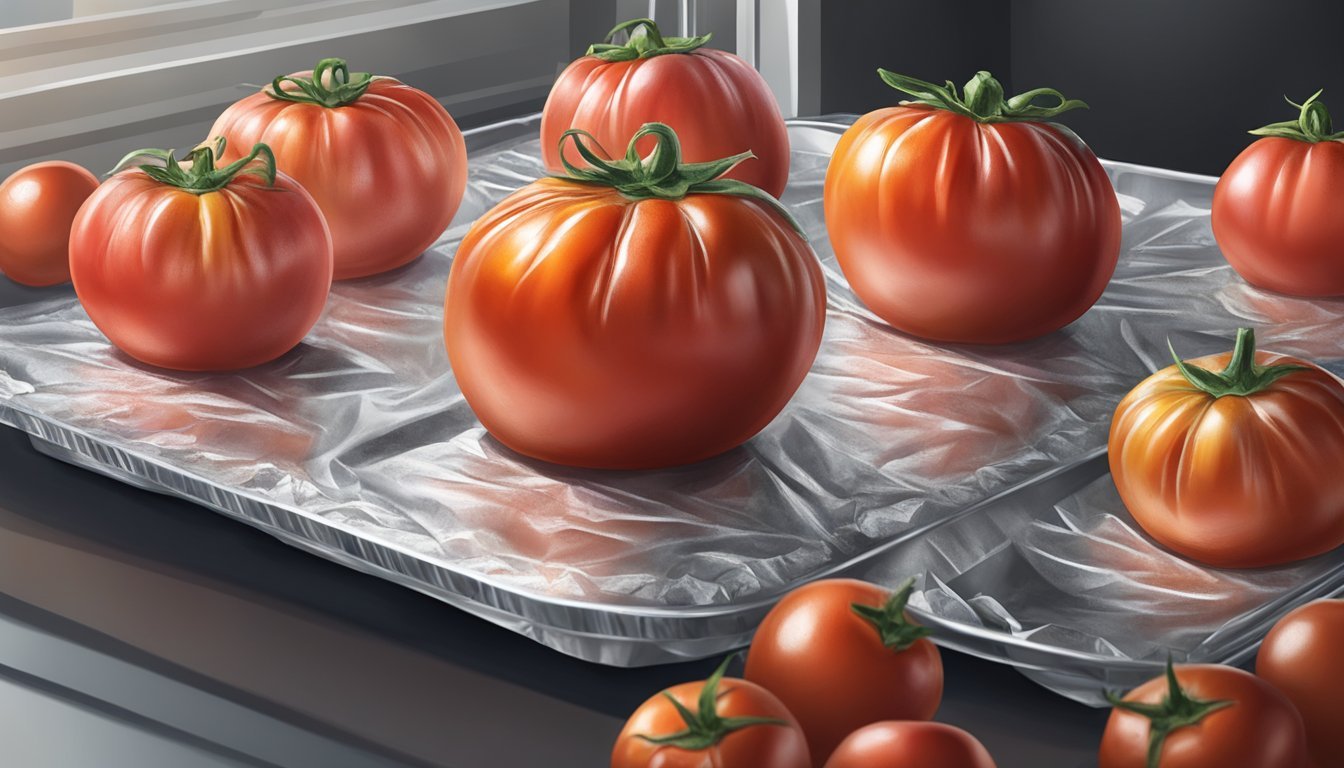How Long Do Gluten-Free Stuffed Tomatoes Last?
Storage Tips and Shelf Life
When it comes to storing gluten-free stuffed tomatoes, it's important to consider both flavor retention and food safety. Gluten-free stuffed tomatoes typically last for about 3 to 4 days when stored properly in the refrigerator. To maintain their taste and texture, they should be kept in an airtight container. This ensures that the tomatoes remain fresh, and the stuffing doesn't dry out or become soggy.
In addition to refrigeration, freezing is an option for those who want to enjoy stuffed tomatoes at a later date. When well-wrapped, they can be frozen for up to a month without significant loss of quality. Reheating them is straightforward but should be done carefully to avoid overcooking the tomatoes or the stuffing.
These storage guidelines not only help in extending the shelf life but also ensure that you get the best experience from your gluten-free stuffed tomatoes. Proper storage techniques are key to enjoying these delightful dishes days after they’re made.
Understanding Gluten-Free Stuffed Tomatoes
Gluten-free stuffed tomatoes are a versatile dish that can be enjoyed by individuals with celiac disease or wheat allergies. This section covers what makes a dish gluten-free and the essential aspects of preparing and serving stuffed tomatoes.
Defining Gluten-Free
Gluten-free means that a food item does not contain gluten, a protein found in wheat, barley, and rye. For individuals with celiac disease or wheat allergy, avoiding gluten is essential to prevent adverse health effects. Products labeled gluten-free must adhere to strict guidelines to contain less than 20 parts per million of gluten.
Gluten-free stuffed tomatoes are made using ingredients that do not contain gluten, such as rice, vegetables, and gluten-free bread crumbs or grains. It's crucial to check all ingredient labels to ensure they meet gluten-free standards. Cross-contamination in the kitchen must also be avoided by using separate utensils and cookware when preparing gluten-free dishes.
The Basics of Stuffed Tomatoes
Stuffed tomatoes are a popular appetizer, side dish, or main course. They typically involve hollowing out tomatoes and filling them with a variety of ingredients. Common fillings include:
Rice or quinoa (gluten-free grains)
Cheese (such as mozzarella)
Seasonings like basil and garlic
Proteins such as crumbled sausage (ensure it is gluten-free)
To prepare stuffed tomatoes, cut the cores out, remove the seeds, and pat them dry to eliminate excess moisture. After filling the tomatoes, they are baked until the filling is cooked through and the tomatoes are tender. Check recipes for specific baking times and temperatures, which typically range from 30 to 60 minutes at 375°F to 400°F.
These dishes can last 3-5 days in the refrigerator when stored in an airtight container, making them a convenient make-ahead option for meals throughout the week.
Key Ingredients for Gluten-Free Stuffed Tomatoes
Creating delicious gluten-free stuffed tomatoes requires careful selection of tomatoes, thoughtful choices for the stuffing, and strategic use of additional flavor enhancers.
Selecting Tomatoes
Choosing the right tomatoes is crucial. Ripe tomatoes that are firm yet yield slightly to pressure work best.
Beefsteak tomatoes and vine-ripened tomatoes are favored for their size and flavor. Tomatoes should be hollowed out using a spoon, removing seeds and juice but retaining the flesh.
Patting the insides with paper towels helps reduce moisture content, ensuring the stuffing stays firm and flavorful.
Gluten-Free Stuffing Choices
When selecting gluten-free stuffing, a variety of options are available. Quinoa, cooked rice, and gluten-free breadcrumbs are popular choices.
For vegetarian or vegan options, adding vegan cheese or omitting cheese works well.
Options like parmesan cheese or mozzarella cheese can be used for non-vegan recipes.
Mix in finely chopped tomato flesh, olive oil, garlic, and herbs for added taste and moisture.
Additional Flavor Enhancers
Flavor enhancers elevate the taste of gluten-free stuffed tomatoes. Extra virgin olive oil is essential for a rich mouthfeel.
Herbs such as fresh basil, oregano, parsley, and thyme add aroma and depth. Season with sea salt and freshly ground black pepper to taste.
Including these components ensures the stuffed tomatoes are not only gluten-free but also bursting with flavor.
Preparation and Cooking
To make gluten-free stuffed tomatoes that last, proper preparation and precise cooking techniques are crucial. Each step, from preparing the tomatoes to baking them in the oven, plays a significant role in achieving the best flavor and texture.
Preparing the Tomatoes
Begin by choosing plump, ripe tomatoes. Wash them thoroughly and pat them dry. Slice off the tops and gently scoop out the seeds and flesh, making sure to preserve the outer shell. This step ensures the tomatoes can hold the stuffing without falling apart.
Sprinkle a bit of sea salt inside the hollowed tomatoes to draw out excess moisture. Let them sit for about 30-60 minutes, then use paper towels to pat them dry. This pre-treatment helps prevent soggy tomatoes during baking.
Mixing the Stuffing
In a large mixing bowl, combine your choice of gluten-free ingredients. Common options include rice, cheese, garlic, and fresh herbs like basil and parsley.
Add olive oil, salt, and pepper to taste, mixing everything together until well combined. Some recipes recommend adding finely chopped tomato flesh back into the mix, enhancing the flavor. Adjust seasonings as needed to ensure a balanced taste.
Baking and Finishing Touches
Preheat your oven to the appropriate temperature, usually between 375°F and 425°F, depending on the recipe. Place the prepared tomatoes in a large baking pan.
Fill each tomato with the stuffing mixture, packing it gently but firmly. Bake for 45-60 minutes, or until the tomatoes are tender and the stuffing is heated through.
For an extra touch, garnish with fresh herbs or a sprinkle of grated cheese before serving. This adds both flavor and visual appeal, making the dish even more inviting.
Optimal Storage Techniques
Proper storage techniques are essential to maintain the freshness and quality of gluten-free stuffed tomatoes. This section discusses short-term and long-term storage methods to help extend their shelf life.
Short-Term Storage
For short-term storage of gluten-free stuffed tomatoes, the refrigerator is the best option. Cover the tomatoes with plastic wrap or store them in an airtight container. This helps retain their moisture and prevents them from absorbing odors from other foods.
Before refrigerating, pat the inside of the tomatoes with paper towels to remove excess moisture. Store the tomatoes in a single layer to avoid bruising. Place them on a plate or in a shallow container.
Store in the refrigerator at around 35-40°F. They can typically last up to 3-5 days at this temperature. Avoid storing tomatoes in the crisper drawer, as the humidity can speed up spoilage.
Long-Term Storage
For long-term storage, freezing is the best method. Before freezing, ensure the stuffed tomatoes are completely cooled. Wrap each tomato individually in plastic wrap or aluminum foil. Place the wrapped tomatoes in a single layer on a baking sheet and freeze until solid.
Once solid, transfer the tomatoes to a freezer-safe bag or container. Label the container with the date so you can keep track of their storage time. Frozen stuffed tomatoes can last up to 2-3 months.
To use, thaw the tomatoes in the refrigerator overnight before reheating. Be mindful that freezing may change the texture slightly, making them softer after thawing.
Reheating Guidelines
Proper reheating ensures that gluten-free stuffed tomatoes retain their flavor and texture. It's essential to follow these methods for optimal results.
Oven Reheating
Reheating in the oven is ideal for maintaining the texture and taste of stuffed tomatoes. Preheat the oven to 350°F (175°C). Place the stuffed tomatoes on a baking dish lined with parchment paper or lightly greased. Cover with aluminum foil to prevent drying out.
Heat for about 20-30 minutes, checking occasionally. For a crispier top, remove the foil during the last 5 minutes of reheating. Ensure the tomatoes are heated evenly by positioning the dish in the center of the oven. Note: Always check the internal temperature reaches at least 165°F (74°C) for safe consumption.
Microwave and Stovetop Options
For quicker reheating, the microwave provides convenience. Place the gluten-free stuffed tomatoes on a microwave-safe plate. Cover using a microwave-safe lid or a damp paper towel to retain moisture. Heat on medium power in 30-second intervals, stirring if possible, until evenly heated. This method prevents the tomatoes from drying out.
Alternatively, on the stovetop, place the stuffed tomatoes in a non-stick skillet. Add a few tablespoons of water for steam. Cover the skillet with a lid and heat on low to medium heat for 5-10 minutes, checking frequently to avoid overcooking. This method helps maintain the texture without excessive sogginess.
Using these techniques helps in achieving the best reheating results, preserving both flavor and quality.
Serving Suggestions
When serving gluten-free stuffed tomatoes, pairing them with complementary dishes and presenting them attractively can enhance the dining experience. This helps in making the meal both visually appealing and satisfying.
Suitable Accompaniments
Gluten-free stuffed tomatoes can be served as an appetizer, side dish, or even a main course depending on the meal. Pairing them with crusty gluten-free bread can add a satisfying crunch. For a refreshing complement, consider a heirloom tomato salad or panzanella, which balances the rich flavors of the stuffed tomatoes.
On cooler days, a bowl of warm soup pairs well, providing contrast in textures. And, if it's a main course, serving it alongside a light quinoa or wild rice dish can round out the meal, offering both nutritional balance and a pleasing variety of textures.
Presentation Tips
For an appealing presentation, place the stuffed tomatoes in a colorful, shallow dish. Garnish with fresh herbs like basil or parsley to add a splash of green that enhances visual appeal. Arrange the tomatoes with some contrasting colored vegetables to make the dish pop.
If serving as an appetizer, use a large serving platter and alternate the stuffed tomatoes with crusty bread slices. For a main course, accompany the tomatoes on a large plate with a side of quinoa salad or wild rice. Ensuring a neat and colorful arrangement can elevate the dining experience, making the dish not only taste good but also look inviting.
Health and Nutritional Information
These gluten-free stuffed tomatoes provide a healthful mix of essential vitamins and nutrients while being suitable for various dietary restrictions.
Caloric and Nutrient Composition
Gluten-free stuffed tomatoes are typically low in calories and fat. A medium-sized stuffed tomato (about 150 grams) generally contains around 50-100 calories, depending on the specific ingredients used.
The filling, often made with rice or other grains, can add 5-7 grams of protein per serving. Olive oil, commonly used in the recipes, offers healthy fats. When chickpeas or other legumes are included, they contribute additional fiber and protein, making the dish more satisfying.
Given the use of fresh vegetables, stuffed tomatoes are a rich source of dietary fiber, offering about 2-3 grams per serving. This high fiber content supports digestive health and helps maintain a feeling of fullness.
Vitamins and Dietary Benefits
Stuffed tomatoes are a good source of essential vitamins, such as vitamins A and C.
Vitamin A, crucial for vision and immune function, can come from the tomatoes themselves. A single tomato can provide up to 20% of the daily recommended intake of vitamin A.
Vitamin C, which supports immune health and skin vitality, is abundant in fresh tomatoes. One medium tomato can deliver roughly 40% of the daily recommended intake.
The inclusion of ingredients like spinach or chickpeas can boost the iron and calcium content. These nutrients are vital for maintaining strong bones and a robust circulatory system. For example, spinach contributes a notable amount of iron, while chickpeas add calcium, enhancing the nutritional profile of the dish.
In summary, gluten-free stuffed tomatoes not only cater to dietary restrictions but also pack a nutritious punch, making them a healthy choice for a balanced diet.
Alternate Variations and Substitutions
There are numerous ways to adjust stuffed tomatoes to fit different dietary needs and preferences, ensuring everyone can enjoy this delicious dish.
Dairy-Free Alternatives
For those looking to avoid dairy, eliminating cheese does not mean sacrificing flavor. Vegan cheese can be a suitable replacement, offering a creamy texture similar to traditional cheese. Nutritional yeast is another option, lending a cheesy, nutty flavor without the dairy.
Pesto, typically made with cheese, can be modified using dairy-free versions or prepared using nuts, basil, and olive oil. This still gives a rich, herby taste.
Goat cheese can be substituted with plant-based cream cheese for those who are not only dairy-free but also prefer a milder flavor and softer texture.
Protein Source Variations
Protein sources can vary to suit different dietary lifestyles. Vegetarian options include incorporating tofu or quinoa into the stuffing, providing a substantial and satisfying protein boost. Chickpeas are another excellent option, bringing both texture and nutrition to the dish.
For those following a vegan diet, sliced eggplant can be added to the stuffing mix, offering a meaty texture and a good source of protein. Including lentils can also enhance the protein content and offer a hearty filling.
If seafood is preferred, fish such as flaked salmon or tuna can be integrated into the mix, adding not only protein but also a distinctive flavor that complements the tomatoes.
By making these adjustments, stuffed tomatoes can cater to various dietary needs while maintaining their deliciousness and nutritional value.
Making Gluten-Free Stuffed Tomatoes Ahead
Preparing gluten-free stuffed tomatoes in advance can save time and make meal prep easier. Focus on prepping components and storing them properly to retain freshness and flavor.
Advance Preparation Tips
For best results, select large, firm tomatoes. Begin by core and seed the tomatoes, then pat the insides dry with paper towels to remove excess moisture. This step ensures the tomatoes remain firm after baking.
Prepare the stuffing separately. Cook rice or other grains, and mix in ingredients like olive oil, garlic, and herbs such as basil. Store the tomato pulp and stuffing in separate airtight containers in the refrigerator for up to 2 days. This method helps keep all elements fresh and ready for assembly when needed.
Before serving, fill the tomatoes with the pre-made stuffing and bake them in a preheated oven at around 375°F (190°C) until heated through. This final cooking step should take approximately 30-45 minutes, depending on the size of the tomatoes.
Recommendations for Meal Prep
Consider making a larger batch of stuffed tomatoes and storing individual portions for quick meals throughout the week. Once the tomatoes are stuffed, they can be kept in the refrigerator for up to 3 days.
For longer storage, freeze the stuffed tomatoes. Place the assembled tomatoes on a baking sheet and freeze until solid. Then, transfer them to a freezer-safe container or bag. When ready to eat, bake from frozen at 375°F (190°C) for about 60 minutes or until hot.
This method ensures you always have a healthy, gluten-free meal option on hand. It is perfect for busy weeks when cooking every night is impractical. Make-ahead and meal prep strategies are great for maintaining a balanced diet without the daily hassle.

